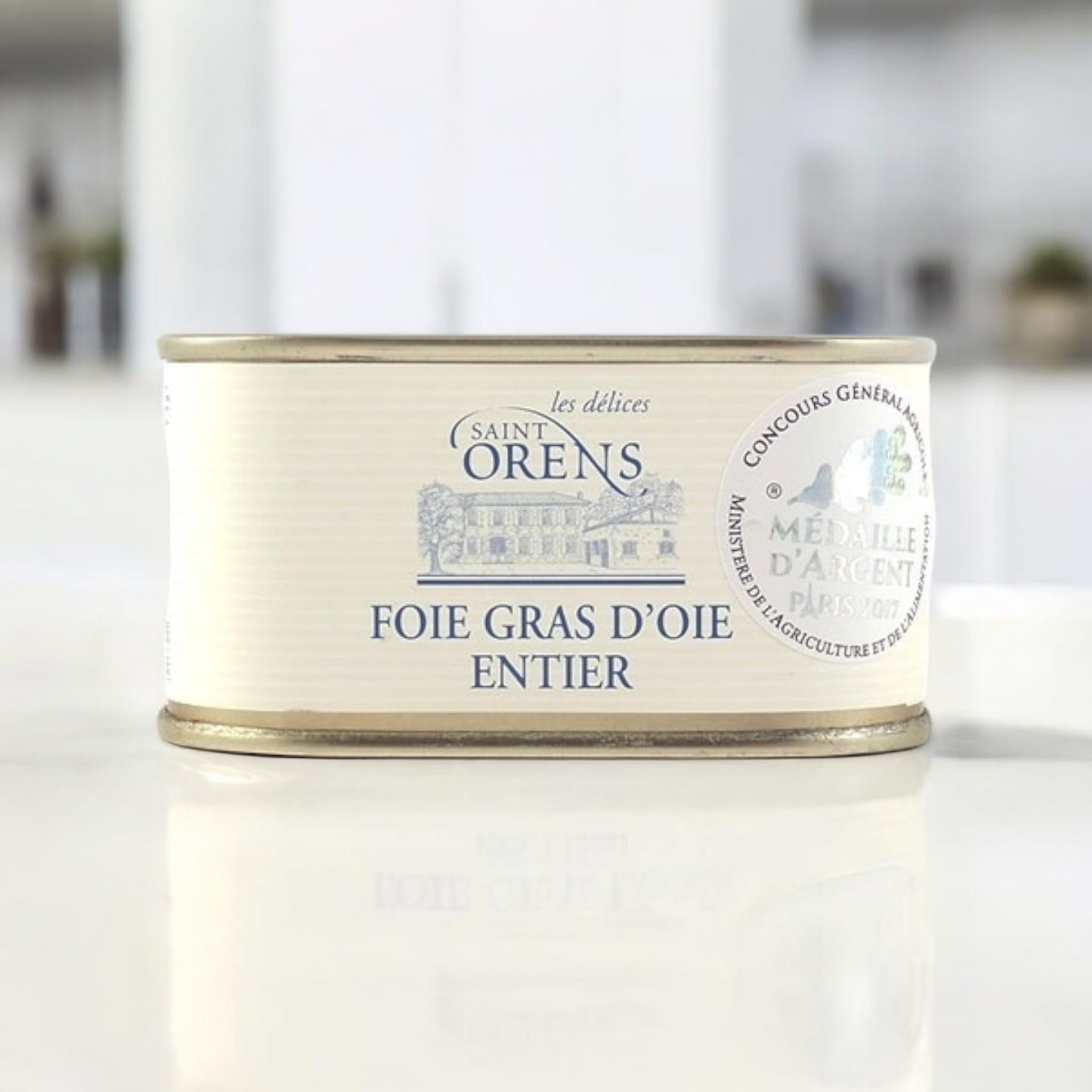
Goose Foie Gras is one of the most sought-after and prized ingredients in French gastronomy, traditionally enjoyed during Christmas and New Year's celebrations, but perfect for any special occasion when you want to impress your guests. This luxury product, packaged in the historic metal tin to best preserve its flavor and texture, stands out for its superior quality. It is obtained from the liver of geese specially raised and fed using a traditional technique called "gavage" (fattening). The term "foie gras" literally means "fat liver" in French and refers to the process by which the goose is intensively fed to obtain a larger liver with a creamier and richer texture compared to a normal liver. The geese destined for foie gras production are raised outdoors, free to move until a final phase of their life cycle, during which feeding begins through the gavage method described above. This traditional technique involves introducing a diet rich in cereals, often corn-based, administered in carefully controlled quantities. This type of feeding stimulates fat accumulation in the goose's liver, making it larger and softer, developing a creamy texture. Once the fattening phase is complete, the livers are collected and carefully selected. From here, they can be processed into different types of foie gras. The most prized is foie gras entier, which consists of a whole liver processed with minimal handling, but there are also variants such as mousse, pâté, or blocks. Goose foie gras is distinguished by its particularly delicate and sweet flavor, very different from the more intense duck foie gras, thus offering a smoother and more refined gastronomic experience. Easy to serve: just place the tin in the fridge the day before, then remove it about 15 minutes before consumption to enhance the flavor. For a flawless presentation, open both ends with a can opener and slide the foie gras onto a plate. Remember to slice it gently and not spread it, as it is not a pâté but a product to be enjoyed for its unique and silky texture. Compared to duck liver, goose liver has a sweeter, more delicate, and rare flavor, a true gastronomic excellence. Try pairing it with slices of toasted bread or brioche, and experiment with refined accompaniments such as Cognac, Port, or balsamic vinegar for an unforgettable gourmet experience. Store in the refrigerator.
Price VAT included
Goose Foie Gras is one of the most sought-after and prized ingredients in French gastronomy, traditionally enjoyed during Christmas and New Year's celebrations, but perfect for any special occasion when you want to impress your guests. This luxury product, packaged in the historic metal tin to best preserve its flavor and texture, stands out for its superior quality. It is obtained from the liver of geese specially raised and fed using a traditional technique called "gavage" (fattening). The term "foie gras" literally means "fat liver" in French and refers to the process by which the goose is intensively fed to obtain a larger liver with a creamier and richer texture compared to a normal liver. The geese destined for foie gras production are raised outdoors, free to move until a final phase of their life cycle, during which feeding begins through the gavage method described above. This traditional technique involves introducing a diet rich in cereals, often corn-based, administered in carefully controlled quantities. This type of feeding stimulates fat accumulation in the goose's liver, making it larger and softer, developing a creamy texture. Once the fattening phase is complete, the livers are collected and carefully selected. From here, they can be processed into different types of foie gras. The most prized is foie gras entier, which consists of a whole liver processed with minimal handling, but there are also variants such as mousse, pâté, or blocks. Goose foie gras is distinguished by its particularly delicate and sweet flavor, very different from the more intense duck foie gras, thus offering a smoother and more refined gastronomic experience. Easy to serve: just place the tin in the fridge the day before, then remove it about 15 minutes before consumption to enhance the flavor. For a flawless presentation, open both ends with a can opener and slide the foie gras onto a plate. Remember to slice it gently and not spread it, as it is not a pâté but a product to be enjoyed for its unique and silky texture. Compared to duck liver, goose liver has a sweeter, more delicate, and rare flavor, a true gastronomic excellence. Try pairing it with slices of toasted bread or brioche, and experiment with refined accompaniments such as Cognac, Port, or balsamic vinegar for an unforgettable gourmet experience. Store in the refrigerator.
| Energy (kcal) | 478 |
| Carbohydrates (g) | 1.7 |
| of which Sugars (g) | 0.1 |
| Fat (g) | 49.3 |
| of which Saturates (g) | 22.5 |
| Protein (g) | 6.8 |